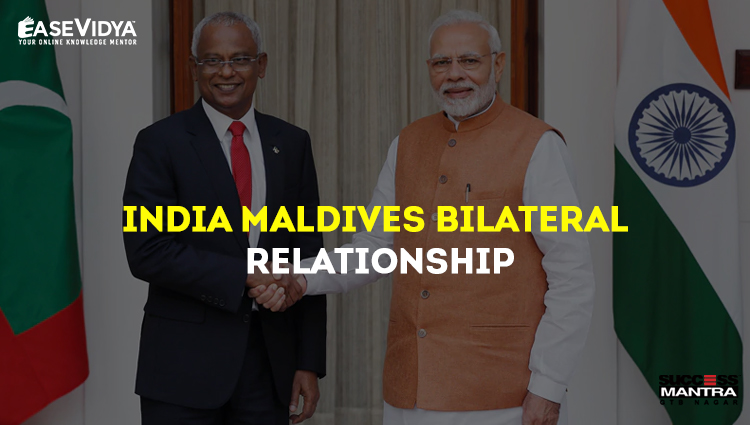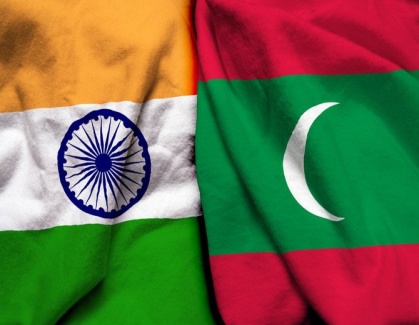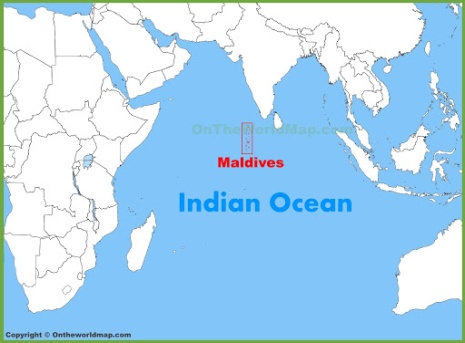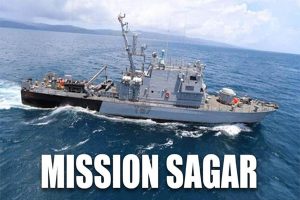
INDIA MALDIVES BILATERAL RELATIONSHIP
INDIA-MALDIVES BILATERAL RELATIONSHIP

Maldives holds strategic importance for India under the Modi government’s ‘Neighbourhood First’ policy due to its location in the Indian Ocean. However, the relations between the two countries were strained under the pro-China regime of their former President Abdulla Yameen. This can be reflected in the recent ‘India Out’ campaign led by Abdulla Yameen, against India’s massive developmental funding for creating physical, social and community infrastructure, and incumbent President Solih’s government retaining two India-gifted helicopters and their operational military personnel. While India-Maldives relations have always been close, cordial and multi-dimensional, recent regime instability in the Maldives has posed some limitations, especially in the political & strategic arena. Therefore, the main challenge to India’s diplomacy is balancing out all these contradictions into harmonious relations.
MOUs SIGNED BETWEEN INDIA AND MALDIVES
Recently, India and the Maldives have signed four Memorandums of Understanding (MoUs).
Two MoUs for High Impact Community Development Projects.
An MoU on Cooperation in Sports and Youth Affairs.
An MoU for a USD 100 million grant to fund the Greater Male Connectivity Project (GMCP) which is the largest ever such infrastructure project undertaken in the Maldives.
GMCP is a financial package by India, consisting of a grant of USD 100 million and a new line of credit of USD 400 million. This will be the largest civilian infrastructure project in the Maldives, connecting Malé (the capital) with three neighbouring islands viz. Villingili, Gulhifalhu (where a port is being built under Indian line of credit) and Thilafushi (new industrial zone) by the construction of a bridge-and-causeway link. This will boost economic activity, generate employment and promote holistic urban development in the Malé region.
STRATEGIC IMPORTANCE OF MALDIVES

Despite being the smallest Asian country with a land area, Maldives is one of the world’s most geographically dispersed countries straddling a 960-km-long submarine ridge running north to south and which forms a wall in the middle of the Indian Ocean. Its strategic location defines the geo-strategic importance of Maldives far beyond its physical size, which can be reflected as the following:
Maldives, a Toll Gate in Indian Ocean: Located at the southern and northern parts of this island chain lies the two important sea lanes of communication (SLOCs). These SLOCs are critical for maritime trade flow between the Gulf of Aden and Gulf of Hormuz in West Asia and the Strait of Malacca in Southeast Asia. While the Indian Ocean is considered as the key highway for global trade and energy flow, Maldives virtually stands as a toll gate. While SLOCs in the vicinity of the Maldives have broader strategic significance for global maritime trade, these are of vital importance for India since nearly 50% of India’s external trade and 80% of her energy imports transit these westward SLOCs in the Arabian Sea.
Increasing Maritime Activity: As maritime economic activity in the Indian Ocean has risen dramatically in recent decades, the geopolitical competition too in the Indian Ocean has intensified. Due to this, China’s strategic interests and logistical limitations in the Indian Ocean have prompted it to increase its presence in the Indian Ocean.
India’s Strategic Priority: A favourable and positive maritime environment in the Indian Ocean is essential for the fulfilment of India’s Strategic priority. Thus, India continuously aims at promoting an ever-expanding area of peace and stability around it. In addition, Maldives is an important partner in India’s role as the net security provider in the Indian Ocean Region.
AREAS OF COOPERATION BETWEEN THE TWO COUNTRIES

Security Cooperation: Through the decades, India has rushed emergency assistance to the Maldives, whenever sought. In 1988, when armed mercenaries attempted a coup against President Maumoon Abdul Gayoom, India sent paratroopers and Navy vessels and restored the legitimate leadership under Operation Cactus. Further, joint naval exercises have been conducted in the Indian ocean and India still contributes to the security of the maritime island.
Disaster Management: The 2004 tsunami and the drinking water crisis in Male a decade later were other occasions when India rushed assistance. At the peak of the continuing COVID-19 disruption, the Maldives has been the biggest beneficiary of the Covid-19 assistance given by India among its all of India’s neighbouring countries. When the world supply chains were blocked because of the pandemic, India continued to provide crucial commodities to the Maldives under Mission SAGAR.
People To People Contact: Technology has made connectivity easier for everyday contact and exchanges. Maldivian students attend educational institutions in India and patients fly here for superspeciality healthcare, aided by a liberal visa-free regime extended by India.
Economic Cooperation: Tourism is the mainstay of Maldivian economy. The country is now a major tourist destination for some Indians and a job destination for others. Given the geographical limitations imposed on the Maldives, India has exempted the nation from export curbs on essential commodities.
MAJOR CONCERNS IN THE RELATIONSHIP
Political Instability: India’s major concern has been the impact of political instability in the neighbourhood on its security and development. The February 2015 arrest of opposition leader Mohamed Nasheed on terrorism charges and the consequent political crisis have posed a real diplomatic test for India’s neighbourhood policy. The Maldives enjoys a special and central place in India’ Neighbourhood First policy and itself has a foreign policy of India First. India is supportive of Maldivian Foreign Minister’s candidature for the Presidency of the 76th session of the United Nations General Assembly in 2021.
Radicalisation: In the past decade or so, the number of Maldivians drawn towards terrorist groups like the Islamic State (IS) and Pakistan-based madrassas and jihadist groups has been increasing. Political instability and socio-economic uncertainty are the main drivers fuelling the rise of Islamist radicalism in the island nation. Events in West Asia, Afghanistan and Pakistan have also influenced Maldivian radicalisation. This gives rise to the possibility of Pakistan based terror groups using remote Maldivian islands as a launch pad for terror attacks against India and Indian interests. Further, India's concern is regarding how radical Islamist forces have been gaining political influence in the neighbourhood.
China Angle: China’s strategic footprint in India’s neighborhood has increased. The Maldives has emerged as an important 'pearl' in China’s “String of Pearls” construct in South Asia. Given the Maldives's strategic location in the Indian Ocean, there are speculations about China trying to develop strategic bases in the archipelago. Given the uncertain dynamics of Sino-Indian relation, China’s potential strategic presence in Maldives remains a concern. Also, the Maldives have started using the China card to bargain with India.
QUESTION (1-5)
Q.1 Which of the following forms of Government is prevalent in the politics of Maldives?
A. Republic form
B. Unitary State
C. Presidential Form
D. All of the above: ANSWER
Q.2 Which of the following is the currently elected president of Maldives by taking the government from Abdulla Yameen Abdul Gayoom?
A. Maumoon Abdul Gayoom
B. Ibrahim Mohamed Solih: ANSWER
C. Mohamed Nasheed
D. Qasim Ibrahim
Q.3 Recently MOUs were signed between India & Maldives. Which of the following is not the Field in which the MOU was signed?
A. High Impact Community Development Projects.
B. Cooperation in Sports and Youth Affairs.
C. USD 100 million grant to fund the Greater Male Connectivity Project
D. All of the above: ANSWER
Q.4 Under which of the following Mission India is supporting and providing crucial Commodities to Maldives and other nations during the pandemic?
A. Mission Jal Shakti
B. Mission Sagar: ANSWER
C. Mission Sagarmala
D. Mission Jal Jeevan
Q.5 Which of the following statements is/are incorrect about the 'Operation Cactus'?
A. It is a Indian military assistance to Maldives.
B. Provided when Coup was against the President Maumoon Abdul Gayoom.
C. The Coup was attempted in the year 2002: ANSWER
D. None of the above












actbmrcyti
Muchas gracias. ?Como puedo iniciar sesion?
janfykfaxu
Muchas gracias. ?Como puedo iniciar sesion?